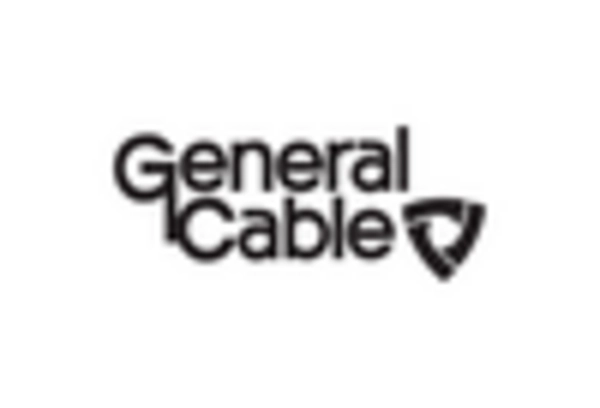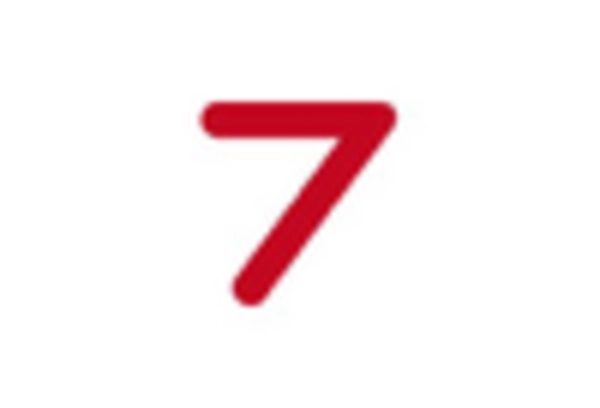Increasing Energy Needs
The growing energy demands in the US are driving the submarine power-cable market. As urbanization and industrialization continue to expand, the need for reliable and efficient energy transmission becomes paramount. The US energy consumption is projected to rise by approximately 10% by 2030, necessitating enhanced infrastructure. Submarine power cables play a crucial role in connecting offshore renewable energy sources, such as wind farms, to the mainland grid. This connection is vital for meeting the increasing energy needs while ensuring grid stability. The submarine power-cable market is thus positioned to benefit from this upward trend, as investments in infrastructure are likely to increase to accommodate future energy requirements.
Investment in Offshore Wind Projects
The US is witnessing a surge in investments in offshore wind energy projects, which significantly impacts the submarine power-cable market. With the Biden administration's commitment to achieving 30 GW of offshore wind capacity by 2030, the demand for submarine cables is expected to rise. These cables are essential for transmitting electricity generated from offshore wind farms to the onshore grid. The submarine power-cable market is likely to see a substantial increase in project financing, with estimates suggesting that investments could reach $12 billion by 2025. This influx of capital will not only enhance the market's growth but also stimulate technological advancements in cable manufacturing and installation.
Strategic Partnerships and Collaborations
Strategic partnerships among key stakeholders are emerging as a significant driver in the submarine power-cable market. Collaborations between energy companies, cable manufacturers, and government entities are essential for the successful execution of large-scale projects. These partnerships facilitate knowledge sharing, resource allocation, and risk management, which are critical for overcoming the challenges associated with submarine cable installations. The submarine power-cable market is likely to witness an increase in joint ventures and alliances, as stakeholders seek to leverage each other's strengths. This collaborative approach may enhance project efficiency and accelerate the deployment of submarine cable infrastructure.
Technological Advancements in Cable Design
Innovations in cable design and materials are transforming the submarine power-cable market. Recent advancements have led to the development of high-capacity cables that can transmit electricity over longer distances with reduced losses. These technological improvements are crucial for connecting remote renewable energy sources to urban centers. The submarine power-cable market is experiencing a shift towards more efficient and durable cable solutions, which could potentially lower installation and maintenance costs. As technology continues to evolve, the market may see an increase in demand for these advanced cable systems, enhancing overall operational efficiency.
Environmental Regulations and Sustainability Goals
The push for sustainability and adherence to environmental regulations are shaping the submarine power-cable market. The US government has set ambitious targets to reduce greenhouse gas emissions by 50-52% by 2030, which necessitates a transition to cleaner energy sources. Submarine cables are integral to this transition, facilitating the integration of renewable energy into the grid. The submarine power-cable market is likely to benefit from increased regulatory support, as projects that align with sustainability goals may receive expedited approvals and funding. This regulatory environment encourages investment in submarine cable infrastructure, further driving market growth.

















Leave a Comment